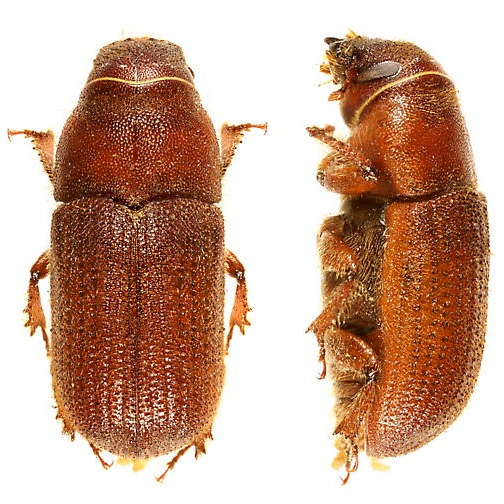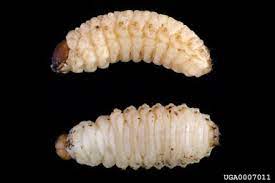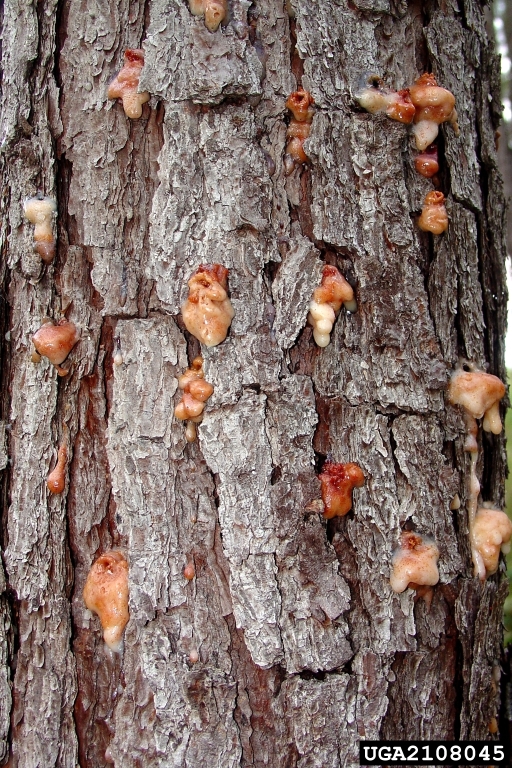
Red turpentine beetle

Red turpentine beetle (Dendroctonus valens) is an exotic plant pest not present in Australia. Red turpentine beetle (Dendroctonus valens) is a serious threat to Australia’s forest industry and amenity trees, and is listed in the forest industry High Priority Pest list.
It attacks pine trees, including Pinus, Larix, Abies and Pseudotsuga.
Notifiable status
Red turpentine beetle (Dendroctonus valens) is not a notifiable plant pest in NSW.
However, if you suspect Red turpentine beetle (Dendroctonus valens):
- Call the Exotic Plant Pest Hotline 1800 084 881
- Email biosecurity@dpi.nsw.gov.au with a clear photo and your contact details
- Complete an online form
A full list of notifiable plant pests and diseases can be found in
Schedule 2 of the NSW Biosecurity Act 2015.
Description
Adult red turpentine beetles (Dendroctonus valens) are relatively large (6–10 mm long) beetles which have brown to black bodies (Figure 1.). The larvae are C-shaped, legless and mainly white, with a distinct, dark head capsule (Figure 2.).



Host trees
It has been recorded on at least 40 species of conifer including species of Pine (Pinus), Larch (Larix), Fir (Abies), and Douglas fir (Pseudotsuga menziezii). In North America, Ponderosa pine (Pinus ponderosa) is the species most frequently attacked, but Radiata pine (P. radiata) is the species most frequently killed.
Damage
Early symptoms include the presence of red boring dust and frass which collects in the bark crevices or drops to the base of the tree (Figure 3.). Pitch tubes (resin mixed with frass) also form on infected trees (Figure 4.). The pitch tubes are usually found up to a height of three metres above the ground and can vary in size, texture and colour depending on the host species.
Infested trees will have entire crowns or individual branches presenting symptoms. The foliage of infected trees becomes pale green then turns orange-red before being shed months later.
A pair of adult beetles will feed on the phloem, forming an egg gallery. Up to one hundred eggs are laid in an elongated mass along the side of the galleries. The larvae are gregarious, living in communal chambers within the phloem, often forming fan shapes with irregular margins as the larvae feed side by side in an irregular line. The galleries are not clean: they are usually packed with boring dust or frass.
Spread
Red turpentine beetle may be introduced to Australia as eggs, larvae or adults concealed within raw timber materials. This could include whole plant parts, timber for construction, timber packaging, wood chips or any other material produced from host trees.
Distribution
Northern and Southern America; introduced into China.
Actions to minimise
Put in place biosecurity best practice actions to prevent entry, establishment and spread of pests and diseases:
- practice “Come clean, Go clean”
- ensure all staff and visitors are instructed in and adhere to your business management hygiene requirements
- monitor your crops regularly
- monitor and control weeds that can harbour the pest
- source plant material of a known high health status from reputable suppliers
- keep records

